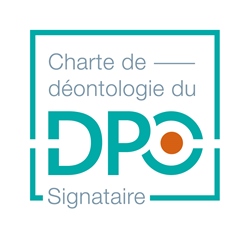INTRODUCTION
With the adoption of the General Data Protection Regulation (GDPR), companies must ensure the compliance of their practices in terms of personal data management. A GDPR Diagnostic is an essential tool that allows you to assess the state of compliance of an organization with this regulation. This article explores in depth what a GDPR diagnostic is, its objectives, its process and its importance for companies.
Definition of GDPR Diagnosis
Objectives of the GDPR Diagnosis
The main objectives of a GDPR Diagnostic are as follows:
1.Identify Non-Conformities: The diagnostic helps identify potential breaches of GDPR rules, whether they are inadequate practices or missing policies.
2.Assess Risks: It helps analyze the risks related to the processing of personal data and identify areas where corrective measures are necessary.
3.Provide Recommendations: At the end of the diagnostic, concrete recommendations are proposed to rectify non-conformities and improve data protection practices.
4.Strengthen Trust: A well-conducted GDPR diagnostic can help strengthen the trust of customers and partners in the company by demonstrating a clear commitment to data protection.
Carry out an Audit of your Information System for Compliance with the GDPR
To achieve GDPR compliance, auditing your organization’s information system is a crucial step. This process involves taking a detailed inventory of your data systems and understanding data movements within and outside the organization.
Step 1: Map Your Data Systems
Start by creating a comprehensive map of all your data systems . This includes identifying every database and tool used, as well as data flows both internally and with external systems. The goal is to determine where personal data resides and how it flows through your organization.
Step 2: Inventory Personal Data
Next, conduct a personal data inventory . Identify what types of personal data are stored in your systems. You will need to detail the locations of this data to fully understand your data landscape.
Step 3: Use a Unified Data Reference
Consider implementing a Unified Data Reference system . This strategy simplifies data management by consolidating scattered data points, making the mapping process less complex. A unified approach ensures a clearer overview and increases the efficiency of compliance management.
Step 4: Reflect on Current Data Practices
Take stock of your current data practices. Many companies find it helpful to adopt data unification solutions, especially those aiming for long-term GDPR compliance. These solutions improve data governance by providing a centralized database that supports both compliance and operational efficiency.
By following these steps, organizations can effectively audit their information systems, ensuring alignment with GDPR requirements. This process not only protects data, but also strengthens overall data governance.
What Legal and Technical Skills Are Essential to Carry Out a GDPR Audit?
Conducting a GDPR audit is not just a task; it is a detailed process that requires a mix of specialized skills. Mastering this process involves both legal and technical expertise. Let’s explore the key skills required:
Legal Expertise
- In-depth knowledge of GDPR : You must understand the General Data Protection Regulation (GDPR) in detail. This includes knowledge of its rules, principles and implications for companies handling personal data.
- Compliance Obligations : Recognize the legal obligations businesses face under GDPR. This skill involves interpreting how businesses must manage and protect consumer data to avoid penalties.
Technical Competence
- Diagnostic Capabilities : Conducting a thorough GDPR audit requires technical aptitude to assess existing data management systems. This means applying a methodical approach to assess compliance effectively.
- Security Assessments : Be able to identify potential data vulnerabilities and ensure technical safeguards are in place to protect sensitive information.
Bridging the Gap
The combination of these legal and technical skills enables a comprehensive assessment of a company’s data protection measures. Successfully aligning technology with legal requirements ensures that companies are not only compliant, but also protected from potential breaches and legal repercussions.
By honing these skills, professionals can conduct audits that build consumer trust and meet data privacy standards.
Conducting a GDPR audit: alone or with professional help?
Embarking on a GDPR audit requires in-depth expertise. Conducting it effectively relies on two key skills:
- Legal Competence : A thorough understanding of the General Data Protection Regulation (GDPR) is crucial. This includes a good knowledge of its requirements and their application in data management within companies.
- Technical Competence : Approaching GDPR diagnostics methodically, following best practices, is essential to ensure full compliance.
Internal or professional orientation?
Not all organizations have these skills in-house. If your team lacks this expertise, it is often necessary to seek external assistance. Here is what you should consider:
- Hire a specialist : Hiring a professional, such as a Data Protection Officer (DPO) or a lawyer who specializes in internet and personal data law, can provide invaluable advice. These experts have the nuanced understanding needed to navigate complex regulatory landscapes.
Whether you choose to conduct the audit internally or with external support, ensuring compliance is paramount. The right approach will protect your organization from potential pitfalls and penalties.
The GDPR Diagnostic Process
Conducting a GDPR Diagnostic typically involves several key steps:
1. Planning: It is essential to define the scope of the diagnostic, establish the objectives, and choose the teams involved.
2. Information Gathering: This step involves gathering the necessary documents, such as privacy policies, the processing register, and consent management procedures.
3. Practice Analysis: Experts examine the organization’s current practices for processing personal data, including the security measures in place.
4. Interviews and Discussions: Interviews with key teams can be conducted to better understand current practices and identify potential friction points.
5. Diagnostic Report: A report detailing the audit results, identified non-conformities, and recommendations for improvement is then provided to the company.
The Importance of a GDPR Diagnostic
A GDPR Diagnostic is crucial for several reasons:
•Sanction Prevention: By identifying and rectifying non-compliances, a company can avoid financial penalties that may result from a violation of data protection rules.
•Continuous Improvement: The diagnostic allows for the establishment of a process for the continuous improvement of data management practices.
•Customer Reassurance: A GDPR audit strengthens the trust of customers, who are increasingly concerned about how their data is processed and protected.
•Sustainable Compliance: By integrating regular audits into its compliance strategy, a company can ensure that its practices remain in line with regulatory developments.





